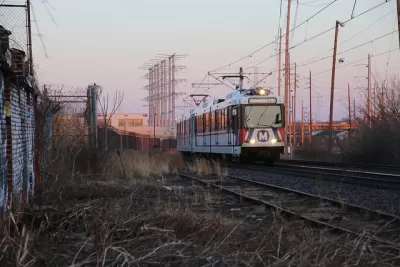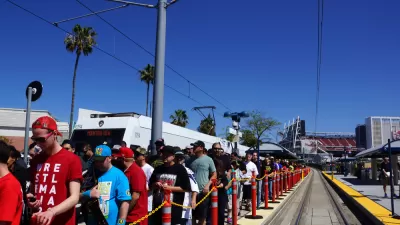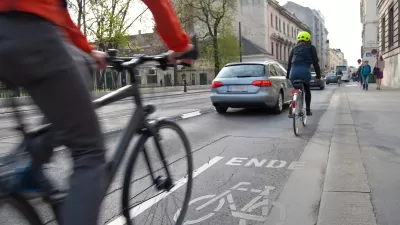American policymakers could improve the effectiveness of infrastructure projects by focusing on five key elements.

Despite policy differences, there are some major "principles that can help us end up with good infrastructure," writes Alex Marshall on Governing.com. In a nutshell, he says, "we take too long to build infrastructure that costs too much, is clunkily designed, is tied too closely to private profit and does not play well with other systems." Yet "good infrastructure is good for cities, states and their citizens; bad infrastructure is bad for them." Marshall lays out five principles for good infrastructure, which come down to the importance of five key factors:
- Cost: "we pay several times more than other advanced nations to build transit infrastructure."
- Time: projects that should take years take decades due to regulatory holdups and other delays.
- Connections: seamless networks are the key to creating truly useful, effective transit systems.
- Design: better design can lead to faster, cheaper construction, yet "we lag behind other countries" in the design of basic infrastructure.
- Ownership: oversight is important, particularly when it comes to major infrastructure. "Even the best-designed and swiftly built infrastructure will turn bad if we give one or two private companies total control over them."
Newly appointed Transportation Secretary Pete Buttigieg "has said that he will push a 'fix-it first' strategy, which is a good principle, even if it is not popular with the private development community that profits from new construction." Marshall argues that, along with basic fixes, infrastructure investment has to plan for the long term.
FULL STORY: What Are the Five Principles of Good Infrastructure?

Alabama: Trump Terminates Settlements for Black Communities Harmed By Raw Sewage
Trump deemed the landmark civil rights agreement “illegal DEI and environmental justice policy.”

Planetizen Federal Action Tracker
A weekly monitor of how Trump’s orders and actions are impacting planners and planning in America.

The 120 Year Old Tiny Home Villages That Sheltered San Francisco’s Earthquake Refugees
More than a century ago, San Francisco mobilized to house thousands of residents displaced by the 1906 earthquake. Could their strategy offer a model for the present?

BLM To Rescind Public Lands Rule
The change will downgrade conservation, once again putting federal land at risk for mining and other extractive uses.

Indy Neighborhood Group Builds Temporary Multi-Use Path
Community members, aided in part by funding from the city, repurposed a vehicle lane to create a protected bike and pedestrian path for the summer season.

Congestion Pricing Drops Holland Tunnel Delays by 65 Percent
New York City’s contentious tolling program has yielded improved traffic and roughly $100 million in revenue for the MTA.
Urban Design for Planners 1: Software Tools
This six-course series explores essential urban design concepts using open source software and equips planners with the tools they need to participate fully in the urban design process.
Planning for Universal Design
Learn the tools for implementing Universal Design in planning regulations.
Clanton & Associates, Inc.
Jessamine County Fiscal Court
Institute for Housing and Urban Development Studies (IHS)
City of Grandview
Harvard GSD Executive Education
Toledo-Lucas County Plan Commissions
Salt Lake City
NYU Wagner Graduate School of Public Service





























